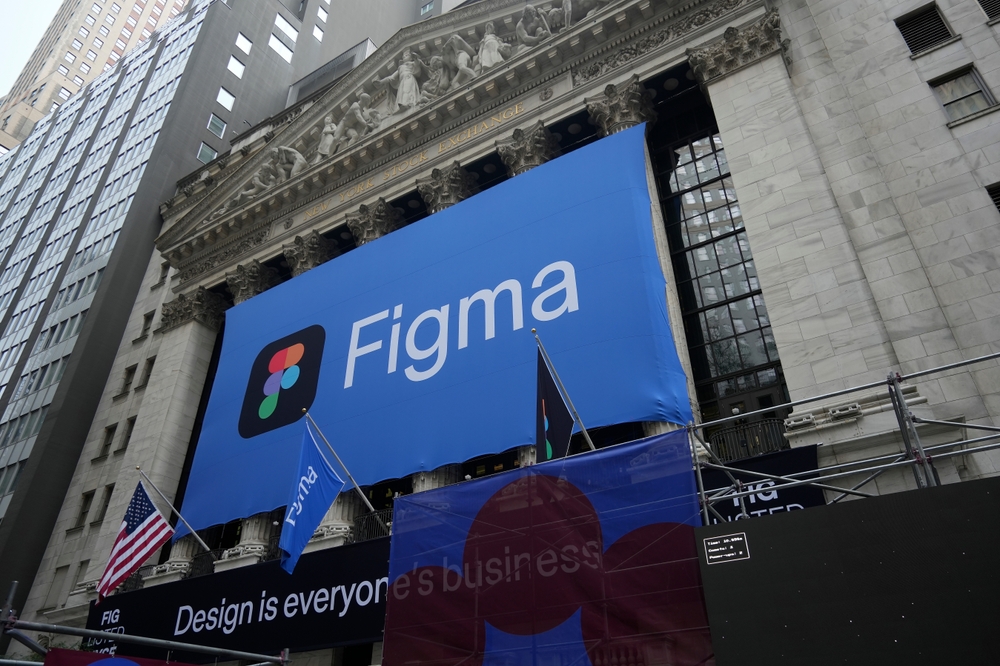Warning on risks: Financial contracts for difference are complex instruments and are associated with a high risk of rapid financial losses due to leverage. On 72.76% of retail investor accounts, financial losses occur when trading financial contracts for difference with this provider. You should consider whether you understand how financial contracts for difference work, and whether you can afford to take the high risk of suffering financial losses. Please read the Risk Disclosures.


One of Adobe’s Main Competitors Goes Public
About the Company
Figma was founded in 2012 with the ambition to bring a revolutionary browser-based tool to the digital design world, allowing real-time online collaboration. At the time, this represented a nontraditional approach, as most design tools were still tied to desktop applications and complicated file sharing. After four years of intense development, Figma launched in 2016 and quickly gained a strong user base. From the beginning, the company adopted a business model that offered free access to small teams, while laying the groundwork for scaling through paid versions for businesses. Today, Figma has more than 13 million monthly active users and is used by 95 % of Fortune 500 companies, underscoring its established position in the global business landscape.
Capital Inflow Expected from IPO
The IPO comes at a time of renewed interest in public offerings, as the tech sector gradually recovers from the slowdown of 2022 to 2024. Figma went public on the New York Stock Exchange (NYSE) on July 31, 2025, marking one of the most anticipated tech listings of the year. The company aimed to sell approximately 37 million shares, of which around 12.5 million were newly issued, with the remainder being sold by existing shareholders, including founder Dylan Field. The price range was set at $30 to $32 per share, which, if the upper end is achieved, would imply a market capitalization of up to $18.8 billion and gross proceeds of around $1.18 billion. [2] This represents a significant increase compared to the company’s private valuation, which fell below $14 billion after Adobe’s failed acquisition attempt in 2022. The company’s shares will trade under the ticker “FIG”, and the IPO is being supported by a consortium of major investment banks including Morgan Stanley, Goldman Sachs, Allen & Company, and J.P. Morgan.
Strong Financials Drive Positive Sentiment
Figma’s target valuation places it among the largest tech IPOs of 2025. This figure represents about 20 times expected revenues, above the software sector average, but justified by its exceptional profitability. In 2024, the company reported $749 million in revenue, a 48% year-over-year increase. In Q1 2025, it generated $228 million in revenue and a net profit of $44.9 million. With a gross margin of 88%, a Rule of 40 score of 63, and over a thousand customers spending more than $100,000 annually, Figma demonstrates that it is one of the few tech companies that can combine rapid growth with financial discipline.
An added value is a 132% net revenue retention rate from existing customers, confirming strong satisfaction and expansion potential. [3] Although the current valuation falls short of Adobe’s failed $20 billion acquisition, investors may view this gap as an opportunity rather than a red flag.
Expansion, Products, and AI
From a long-term strategy perspective, Figma has a clear vision for competing. At the Config 2025 conference, it introduced new products like Figma Sites for website creation, Figma Draw for illustrations, Figma Buzz for marketing outputs, and Figma Make—an AI-powered tool that helps generate designs through natural language. The company’s ambition is to become a platform for the entire product cycle, from concept to prototype to publication. AI technologies play a key role in this mission. Figma doesn’t view AI as a replacement for designers, but as a way to save them from routine tasks and free up more room for creativity.
Risks and Competitive Landscape
Despite its strong potential, Figma faces several risks. Adobe, as a dominant player in the creative software space, still has substantial capital and development resources and could introduce its own alternatives in the future. The fast-evolving AI tool segment presents another threat, especially if new players manage to fill specific market gaps. Economic uncertainty, regulatory interventions, and potential reductions in corporate willingness to invest in expensive digital tools could also impact stock performance.
Conclusion
With its IPO, Figma joins the ranks of tech firms that have not only responded to changes in the work environment but have actively shaped it. It has evolved from a tool for designers to a platform used by product teams, developers, marketers, and managers. If its IPO is well-received, it could encourage other companies in the design and collaboration space to go public as well.
[1,2,3] Forward-looking statements are based on assumptions and current expectations that may prove inaccurate or on current economic conditions that may change. Such statements are not guarantees of future performance. They involve risks and other uncertainties that are difficult to predict. Results could differ materially from those expressed or implied by any forward-looking statements.